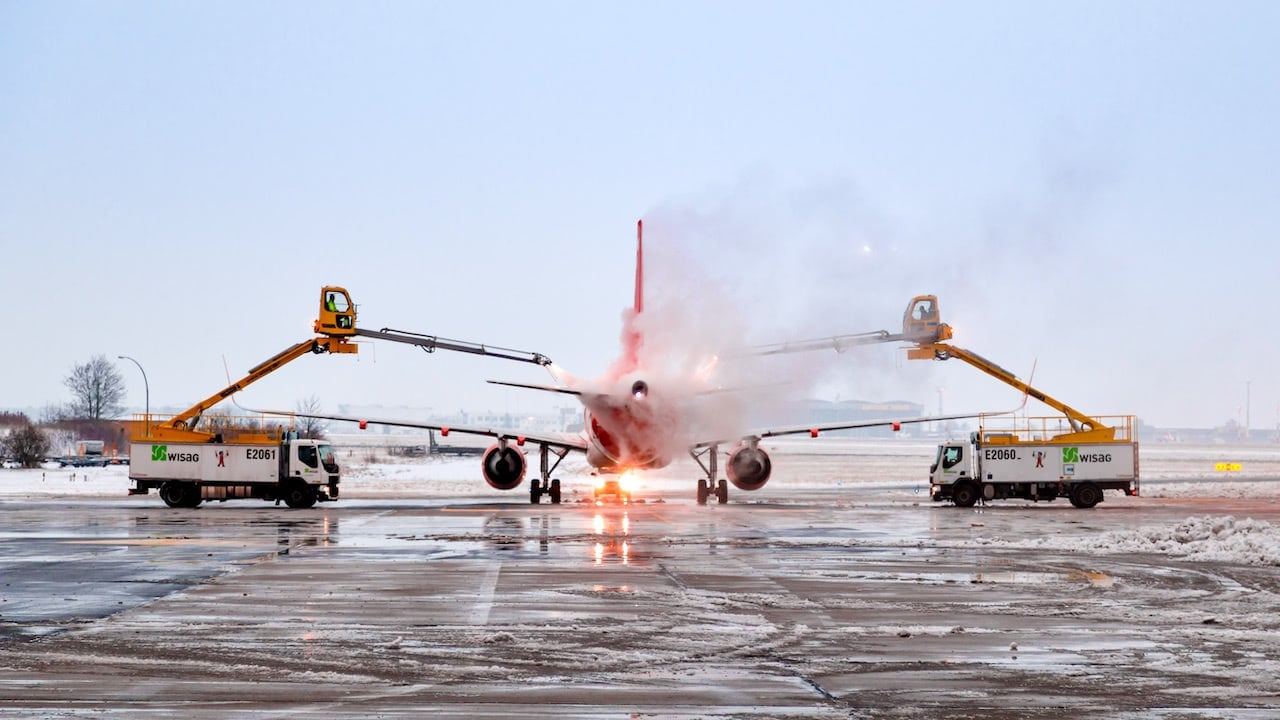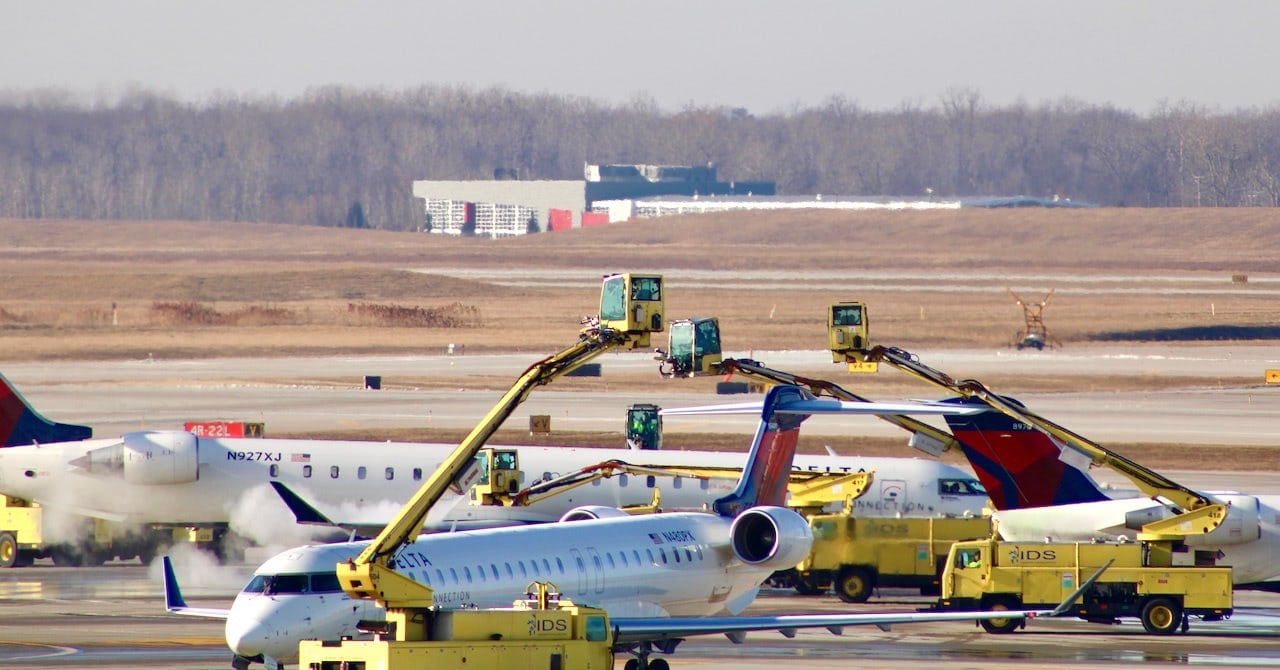Photo: © CEphoto, Uwe Aranas, CC BY-SA 4.0 on Wikimedia Commons
Aircraft de-icing is one of the most important procedures during the coldest months of the year. In winter, airports are obliged to activate their winter plans, which include all the measures and actions to guarantee safe operations.
One of the most crucial parts of winter operations is the de-icing procedure. But how is this done? In other words, how do you de-ice an aircraft? Read on to find out.




